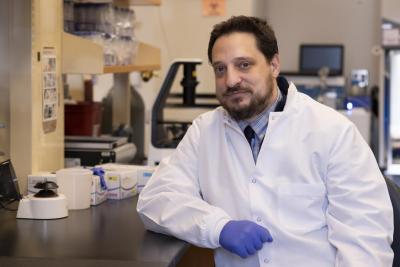
Researcher Brad Gelfand has discovered an unexpected connection between the two main forms of age-related macular degeneration (AMD). Credit: Dan Addison, University of Virginia Communications.
Researchers at the University of Virginia have successfully treated age-related macular degeneration (AMD) in mice after finding an unexpected link between the two main forms of the blinding eye disease, the leading cause of vision loss in people 60 and older. They found that the absence of a particular enzyme could drive both forms of AMD. The enzyme, called Dicer, is lost with age, and that loss leads to an overgrowth of blood vessels in the retina and other damage.